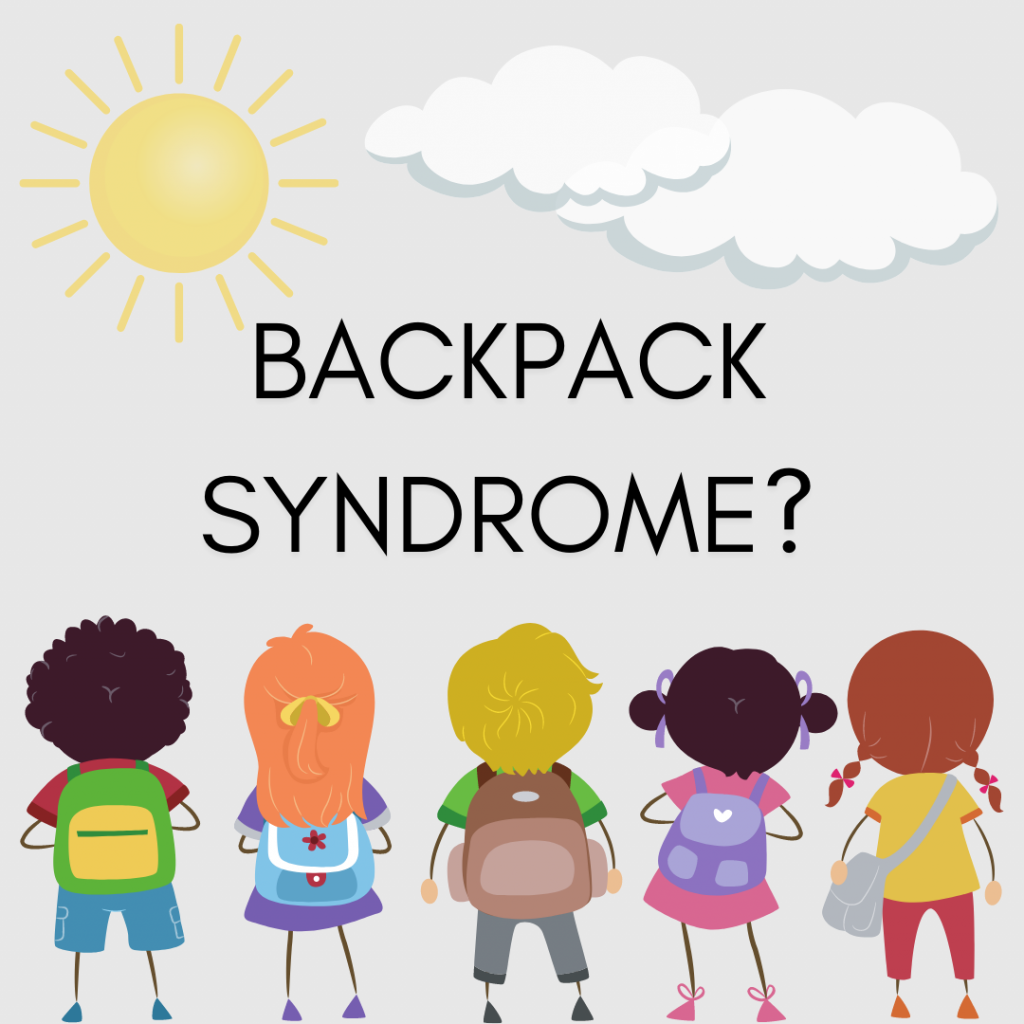23 Aug Backpack Syndrome

After an unusual last year school, it is so exciting to see our children returning back to school in person this fall!
Backpacks come in all sorts of styles, colors, fabrics and designs. Kids really look forward to showing their personality through their backpack.
Wearing a backpack correctly allows the stomach and back muscles to support the backpack’s weight.
- Every school year, there are over 5000 injuries related to heavy backpacks
- 20% percent of children miss school or sports activities every year because of pain caused by heavy backpacks
- 30-50% of adolescents complain of pain in the abdominal muscles, back, neck, and shoulders, related to heavy backpack use
How Backpacks Can Cause Problems:
The spine has 33 bones called vertebrae. Between the vertebrae are discs that act as natural shock absorbers. When a heavy weight backpack is incorrectly placed on the shoulders, the weight’s force can pull you backward. To compensate, you bend forward at the hips or arch the back, which can cause the spine to compress unnaturally.
Backpack Tips:
A backpack should not weight more than 10% of a child’s body weight and, no backpack should weight more than 20 pounds
A back pack should be made of light weight material
A backpack should not be wider than the child’s torso or hang more than 4 inches below the waist/belly button
Padded, adjustable shoulder straps to help distribute the weight on the back without digging into their shoulders
Padded back to protect against contents inside the backpack poking into the back
Waist and chest straps to help distribute the weight of the backpack more evenly across the back
Use both straps when carrying the backpack. Using one strap shifts the weight to one side and causes muscle pain and posture problems
Tighten the shoulder straps so the backpack is fitted to the back
Place heavier items closer to the back center and put lighter items out front. Secure items in compartments so they don’t shift
Lift with your legs, bending at the knees, and not with your back.